Embodied Forms: Painting Now


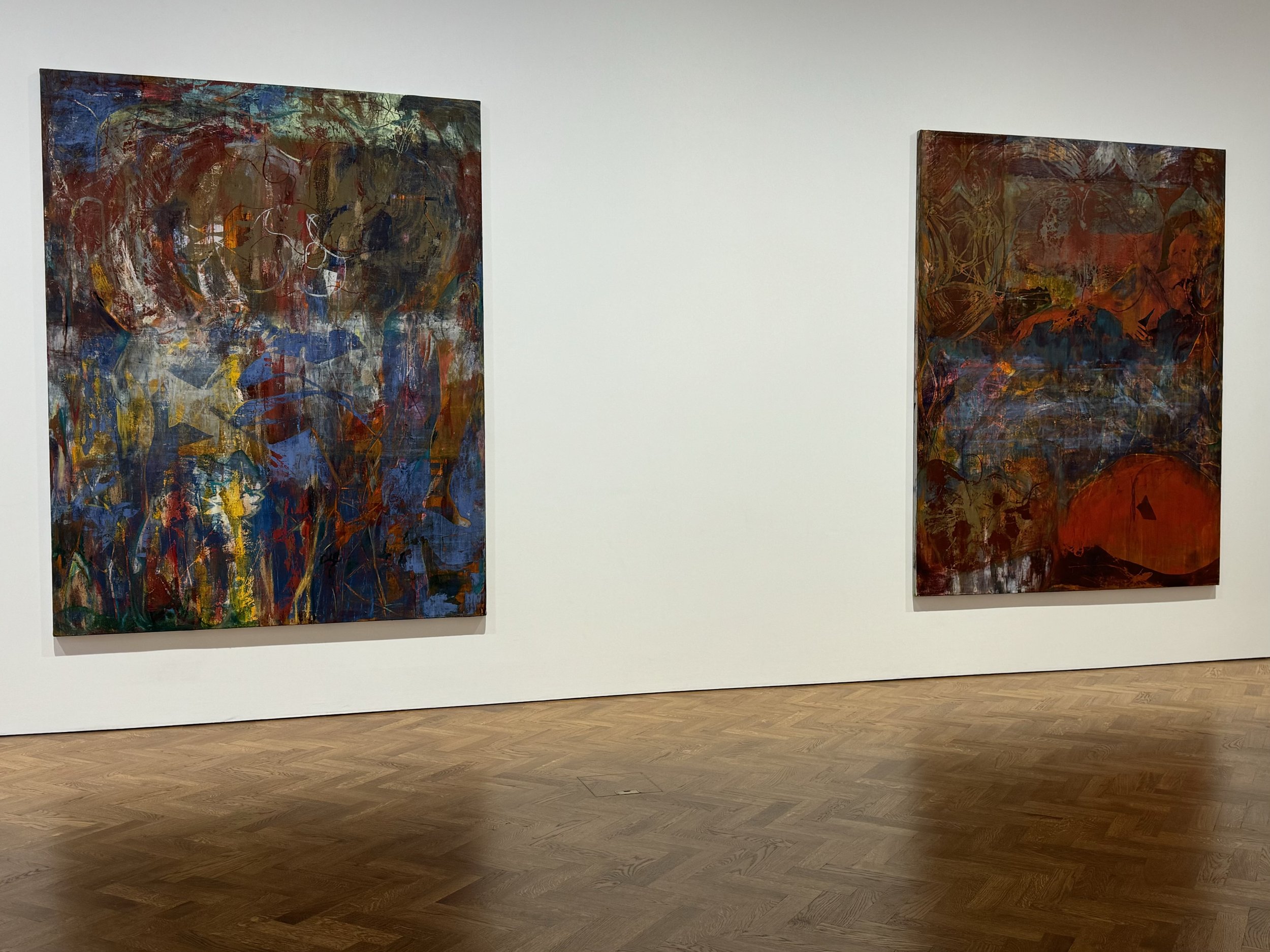
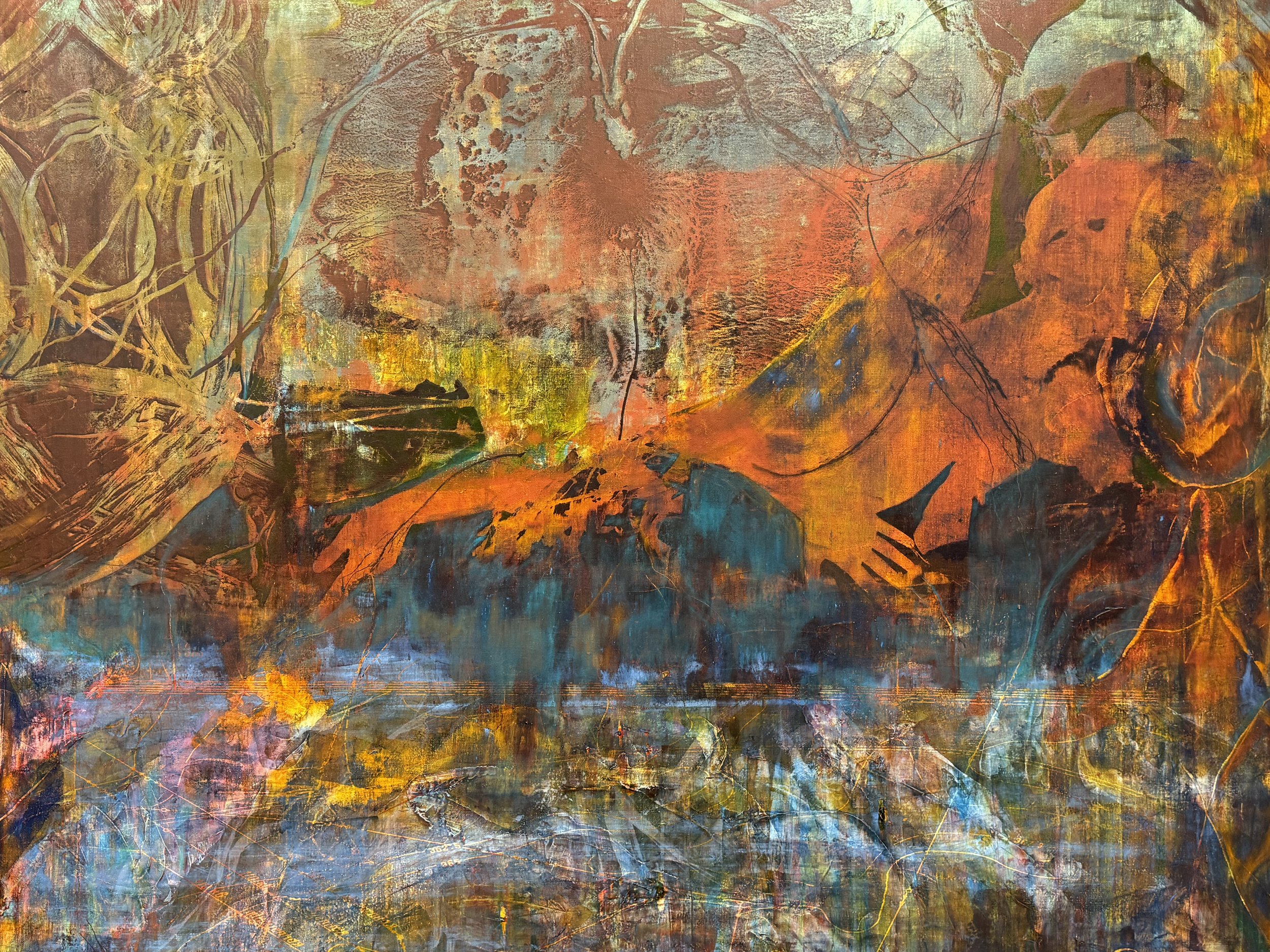

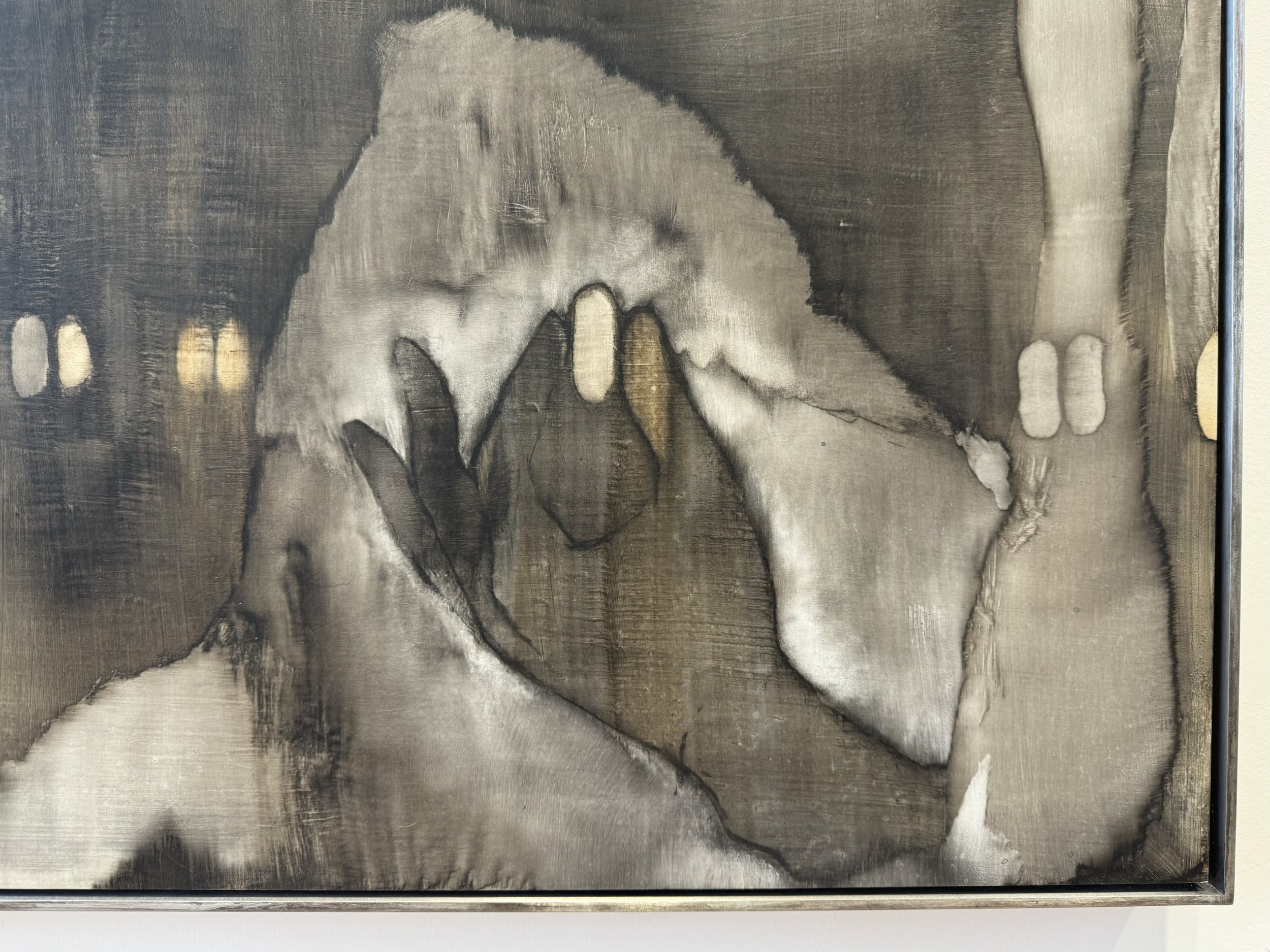
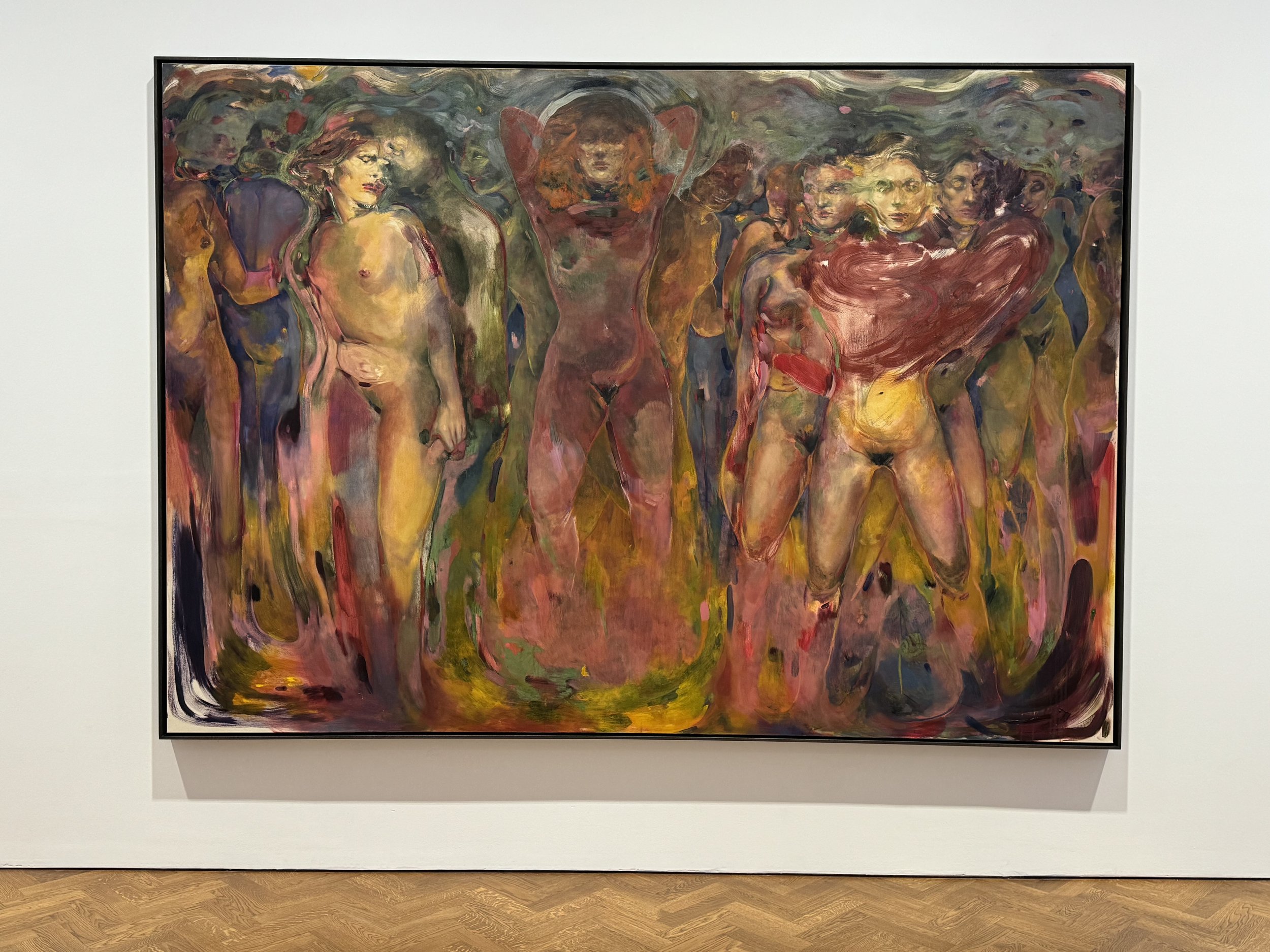
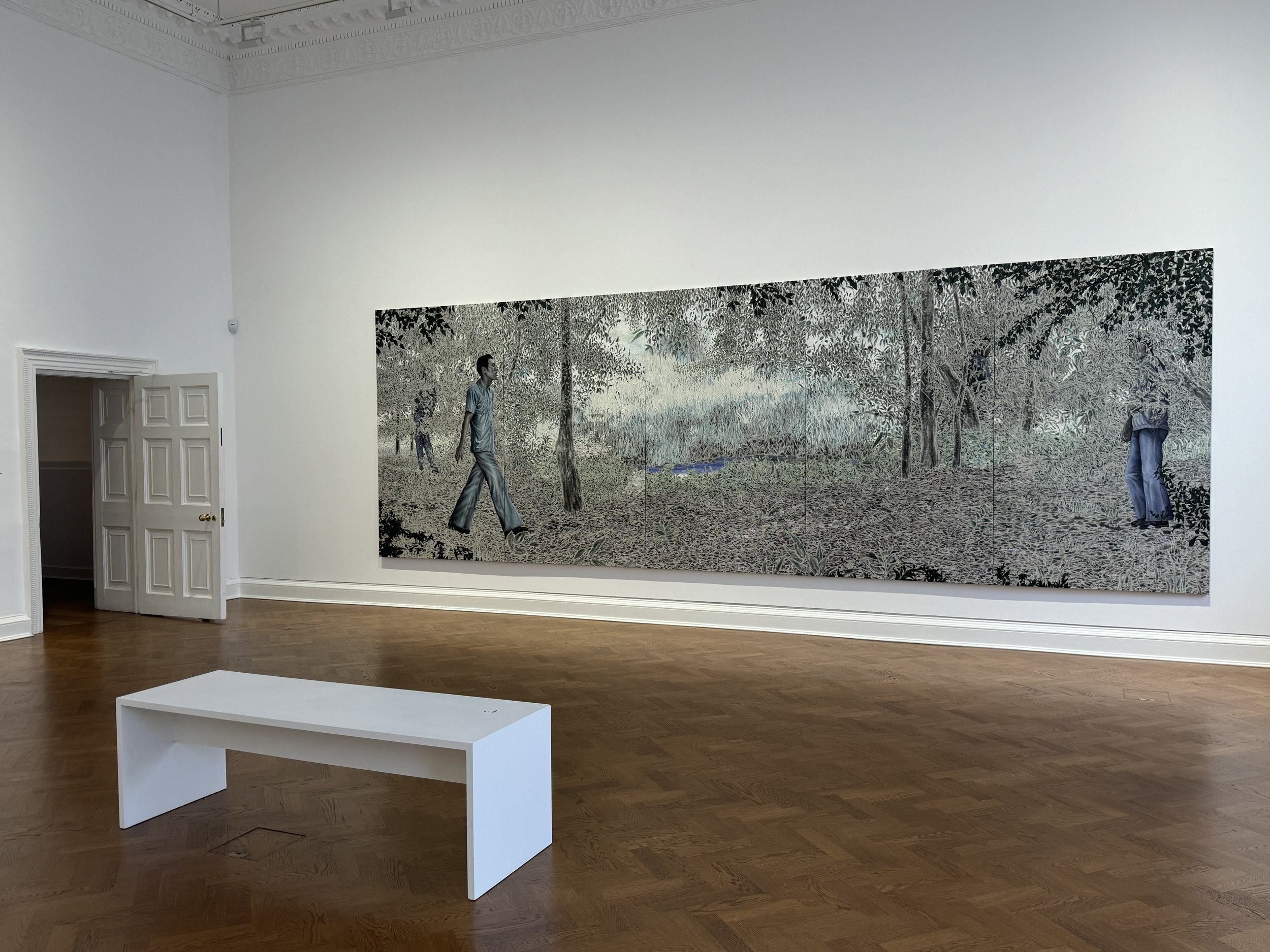

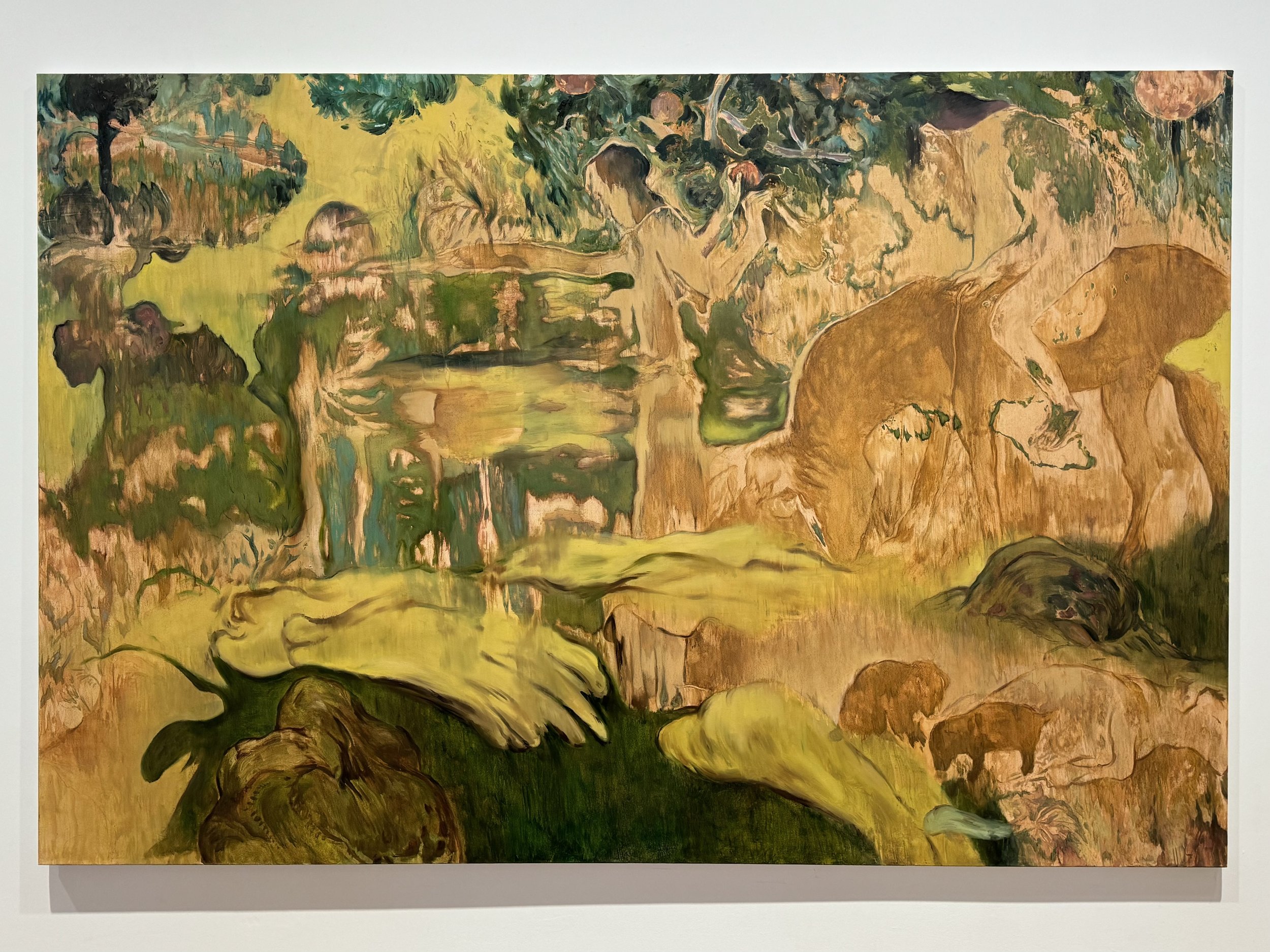
Oh what a joy it is to see properly large, properly push-the-boundaries abstract art. These ambitious canvasses, most bigger than me, fill out Thaddaeus Ropac’s stately venue with bold strokes and chaotic compositions. Enigmatic at first glance, the works exhilarate me and are a welcome reminder of the power that elite Mayfair galleries have to advance contemporary abstract. And then I noticed… an intestine?
Effie Wanyi Li paints semi-transparent forms that intertwine and pour out from each other in what appears to be a sinuous alien landscape. I see flowers and waterfalls and then subtle body motifs that scare me. Intestines. Teeth. Wisps of hair. It’s HR Giger meets Georgia O’Keefe and the more I look the less easy I feel, so I move on to a trio of heavily layered works from Olga Grotova that contain outlines of fragmented body parts amongst the illusion of patterns. A hand. A leg. A reclining torso that I initially thought was a mountain top. Appendages appear and recede throughout the works, hinting at humans hidden beneath the chaos. These outlines are traces of the artist and her mother, scattered as a tribute to the many Soviet and Eastern European women that have been erased from historical records.
All the works in this show feature figurative elements, but on a sliding scale most lean heavily towards the abstract. To call Carolina Aguirre’s works figurative would be a massive stretch. They look like aerial landscapes from an industrial mining zone, filled with charcoal, shellac and a gritty, geological feel. I leaned in to study the textures and only then did I notice imprints of the artist’s own hand and body that had been hiding clearly in plain sight. Like the wisps of hair in Effie Wanyi Li’s work, these easily missed aspects provide just enough trace of humanity to change your perspective entirely. But what are they saying?
The confusion continues even as works shift more clearly towards the figurative end of the spectrum. Eva Helene Pade fills her canvasses with hordes of naked women. They pose with power and confidence, like statuesque supermodels posing for a photo shoot. Except their bodies and bouffant heads of hair blur together and I can’t tell which way the gaze is intended. Am I voyeur or prey? These are neither erotic nor nightmare, but definitely the most imposing works in the show.
Upstairs a 6.5 metre wide forest scene from Michael Ho depicts three men casually “hidden” amongst the trees. I’m convinced I could step right into the clearing of this mural-sized work, though I’m not sure I’d want to. It triggers memories of the time I got caught out in Clapham Common and nipped into the bushes for a desperate wee, only to awkwardly encounter exactly this scene. My heightened visual and emotional response to these works is largely due to the life-sized depictions on supersized canvasses.
That impact is reinforced by the handful of modestly sized pieces in the show. Two smaller canvasses by Effie Wanyi Li are much less engaging than her single large work. The same goes for two works by Dean Fox, which share a different but equally annoying issue with the works of YaYa Yajie Liang. They’re painted in that trendy hazy/out-of-focus style that forces you to squint if you want to understand the composition. It’s a technique that I find incredibly off-putting when applied to an entire canvas, although when used sparingly as part of a larger expression it can be an effective enhancement.
In ‘The Journey after Gauguin’ Dean Fox has re-configured a collection of elements from Post-Impressionists Édouard Vuillard and Paul Gauguin. It’s an art history honeypot that visually reminds me of the scene in Raiders of the Lost Ark when everyone’s face melts. Some key features appear tantalisingly familiar, while others are a drippy melting mess, obscured and unexplained. Viewing this work was a frustratingly beautiful experience.
Unlike pure abstract, where familiarity is limited to colour or geometric recognition, all these works include figurative human elements that capture your attention and hint at deeper meanings. I suspect some have no meaning to reveal, but that’s not immediately obvious and so I sit. And I stare. And I study. And I am reminded how engaging abstract figurative can be.
Plan your visit
‘Embodied Forms: Painting Now’ runs until 28 September.
Visit ropac.net and follow @ThaddaeusRopac on Instagram for more info about the venue.
PLUS…
Check the What’s On page so you don’t miss any other great shows closing soon.
Subscribe to the Weekly Newsletter. (It’s FREE!)
